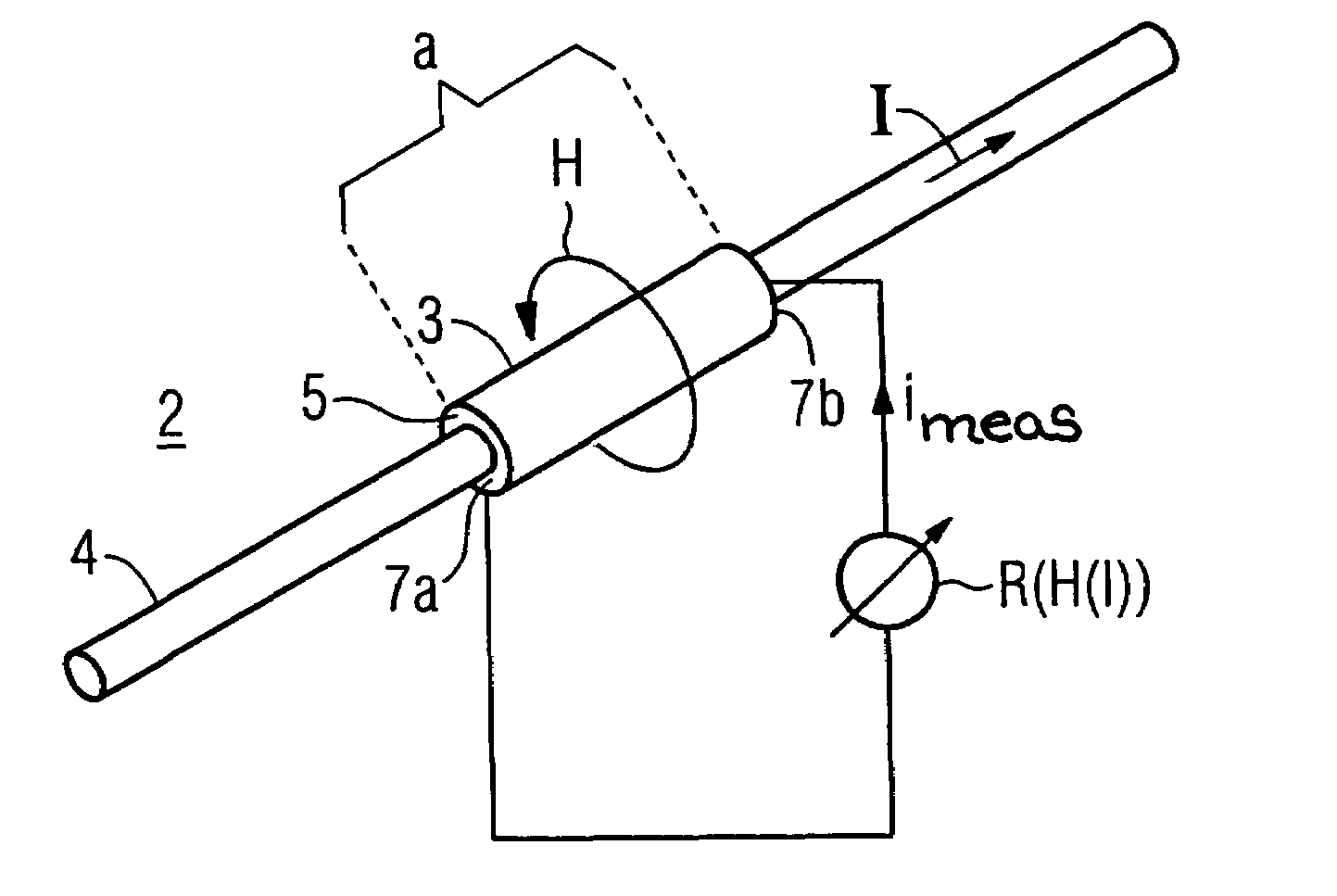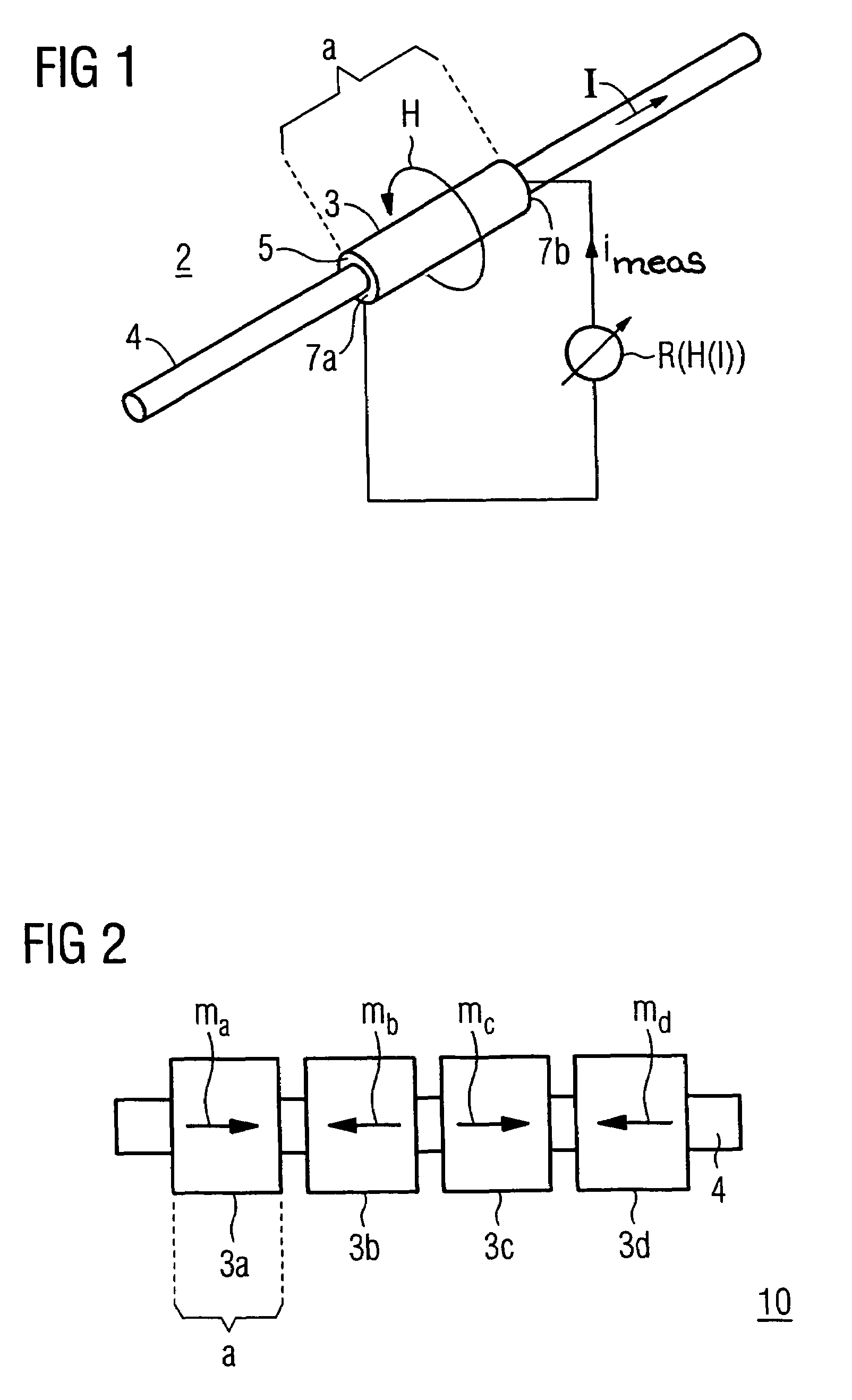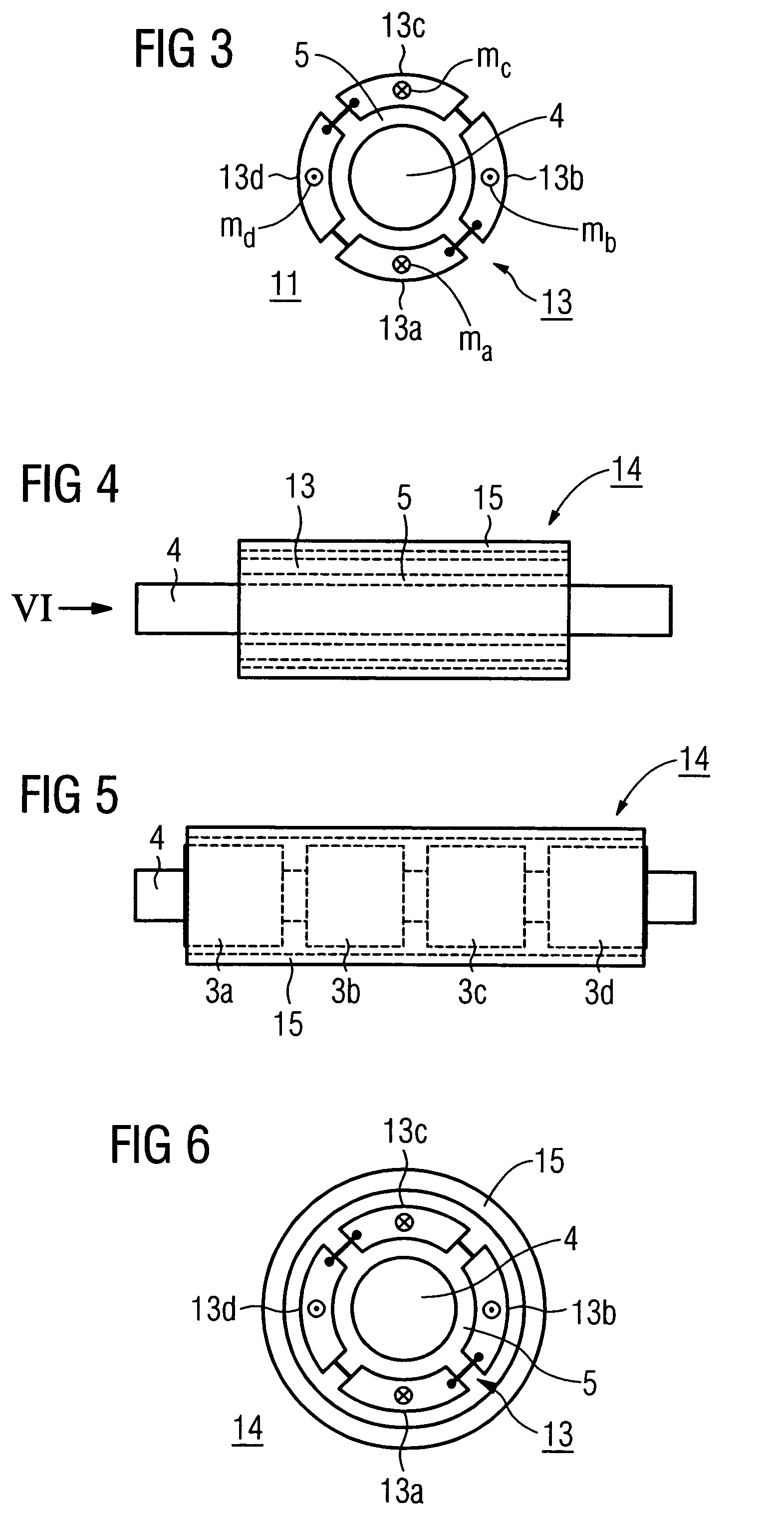Apparatus for current measurement
a current sensor and apparatus technology, applied in the direction of galvano-magnetic devices, measurement using dc-ac conversion, instruments, etc., can solve the problems of high complexity of the design of the known apparatus, limited operation range of the current sensor, and limited use of magnetoresistive materials. the effect of reducing the size of the known apparatus
- Summary
- Abstract
- Description
- Claims
- Application Information
AI Technical Summary
Benefits of technology
Problems solved by technology
Method used
Image
Examples
Embodiment Construction
[0028]The current measurement apparatus 2 which is illustrated according to an embodiment of the invention, as illustrated in FIG. 1, has a sensor element 3 which surrounds an electrical conductor 4 through which direct current or alternating current I is flowing. In this case, the sensor element 3 is conductively isolated from the electrical conductor 4, for example being isolated from it by way of a thin insulation layer 5.
[0029]The sensor element is in particular in the form of a ring or sleeve, which represents a sheath which magnetically completely surrounds the electrical conductor 4 in the circumferential direction. In this case, the sensor element has a predetermined extent which is pronounced in the axial direction and shall be at least 1 mm. At least a substantial proportion of it is composed of a magnetoresistive material.
[0030]Fundamentally, all materials which are known per se with an XMR effect (see the cited brochure “XMR Technologies”, pages 11 to 43) may be used for...
PUM
 Login to View More
Login to View More Abstract
Description
Claims
Application Information
 Login to View More
Login to View More - R&D
- Intellectual Property
- Life Sciences
- Materials
- Tech Scout
- Unparalleled Data Quality
- Higher Quality Content
- 60% Fewer Hallucinations
Browse by: Latest US Patents, China's latest patents, Technical Efficacy Thesaurus, Application Domain, Technology Topic, Popular Technical Reports.
© 2025 PatSnap. All rights reserved.Legal|Privacy policy|Modern Slavery Act Transparency Statement|Sitemap|About US| Contact US: help@patsnap.com



